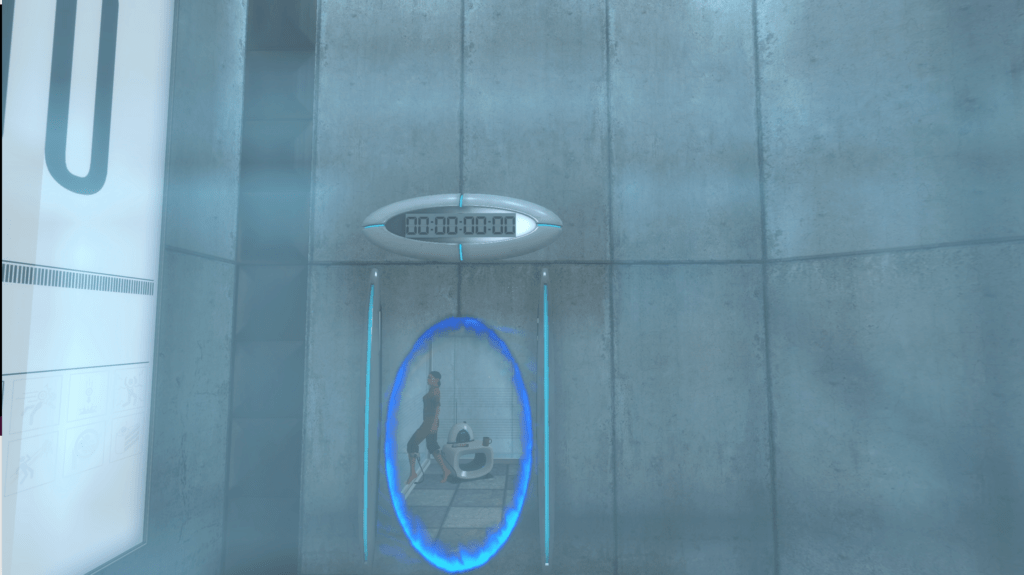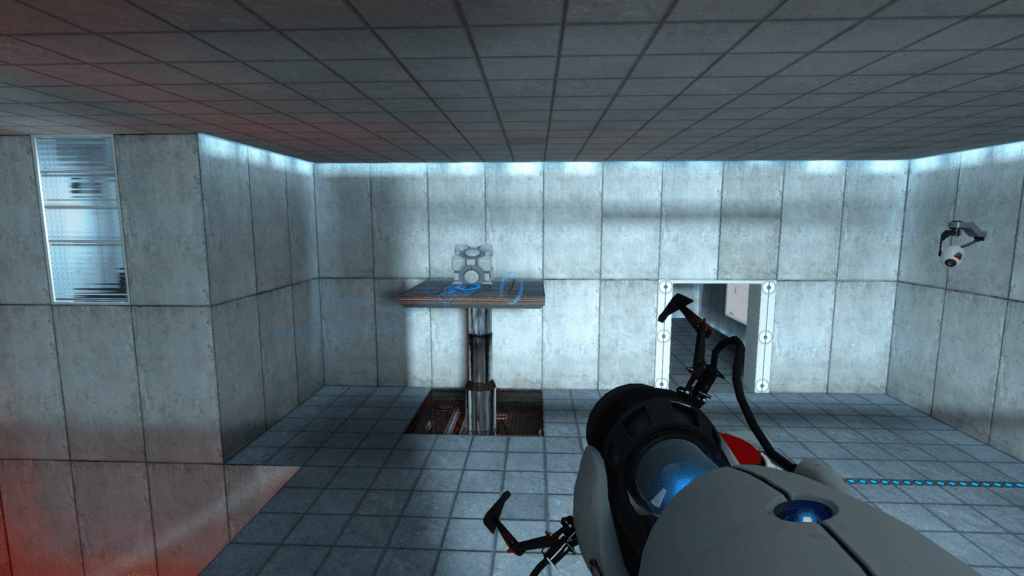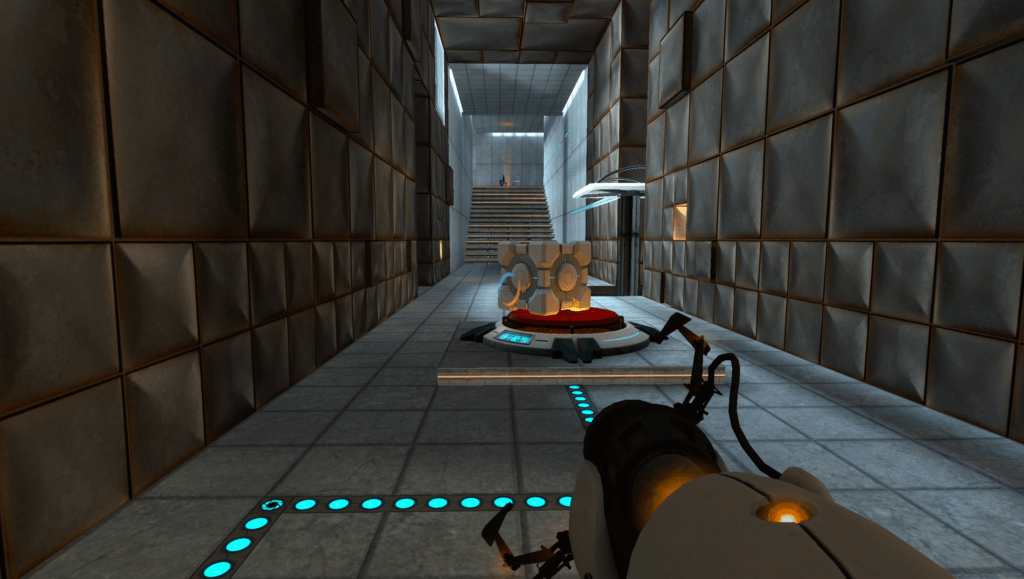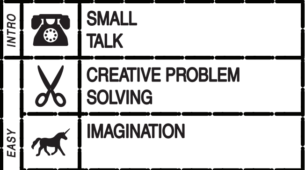Name of the Game: Portal 1
Game’s Creator: Valve
Target Audience: Although there is no mature content in the game, the puzzles involved may be best enjoyed by a teenager or young adult. Players who enjoy puzzles and science fiction would thoroughly enjoy the gameplay and story, respectively.
Platform of the Game: Personal Computer (PC)

The gameplay in Portal 1 depends on the player’s use of the blue and orange portals that are ejected from the portal gun that the player wields. There are limits on where the portals can be validly placed which complicate the approaches that the player must come up with to solve each level. Another portal mechanic is that inertia is conserved anytime the player or an item enters and exits a portal, allowing the player flexibility in their solution. Portal 1 mainly focuses on logic and timing puzzles that commonly use weighted storage cubes to maintain multiple buttons pressed for the player to unlock the next level. The narrative of the game is progressed by a narrator, GLADOS, who is a quirky AI that speaks to the player, slowly revealing more about the company Aperture Science which is the designer of the gun, and the role the player plays in the overall story. Aperture Science is a fictional company that is part of the Half-Life universe, another game series developed by Valve, connecting the narrative between games.

At first, during the onboarding process, the player is introduced to portals without the portal gun, having to solve short puzzles based on the portal mechanics alone, relying on the pre-programmed cycle of portal positioning to dynamically switch between portals. In this stage, the player is also introduced to the weighted storage cube, which can kill the player if it falls on them and activate buttons when placed on top of one by the player. This seamless, hands-on onboarding tutorial introduces the player to the puzzles’ mechanics in a low-stakes environment with relatively easy puzzles to not overwhelm the player when they first start the game. This introduction is fair since the tutorial requires the player to use the controls in a real-world environment, allowing them to experiment with the mechanics, instead of showing them a “How to Play” screen with a wall of text and instructions. This naturally builds intuition within the player rather than making it feel like a test that they will have to study for when preparing to play the game. These puzzles, since they are tied back to the narrative, are organically derived from the environment, staging each level as a new floor that the AI takes the player to via an elevator.

The first-person perspective is maintained throughout the game, removing any distractions from the game’s flow like a shift in perspective. The science-fiction theme is amplified by the puzzles since the player uses a futuristic portal gun to solve puzzles while a smart AI narrator reacts according to the player’s movements and progress through the game. After making many different unsuccessful attempts at solving a puzzle, each time learning a new successful strategy to progress, the final solving of a puzzle is incredibly satisfying as you enter the elevator feeling accomplished. This sense of accomplishment is heightened by GLADOS’ snarky comments when you start the level, hyping up the level to be “unsolvable” or “impossible”, which is quickly contrasted with the eureka moment the player feels when they finally find the solution to the puzzle. The game’s difficulty is slowly ramped up with each subsequent solved puzzle, each puzzle growing more complex as approaches to previous levels now act as tools for the player to experiment with when solving puzzles.




